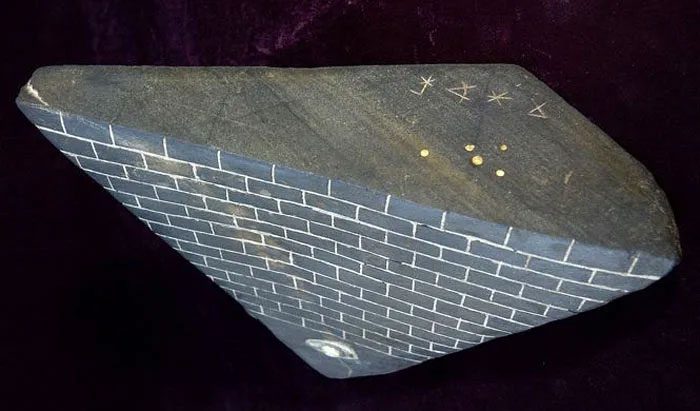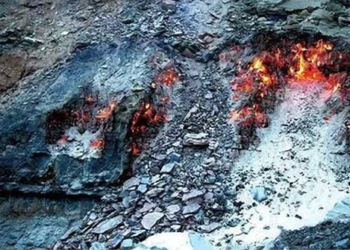The mystery of the ancient Egyptian pyramids has long fascinated humanity. Built with precise engineering over thousands of years, these towering architectural marvels have withstood the test of time. However, our understanding of their origins may have been misguided for a long time.
The Egyptian pyramids are believed to have been constructed by ancient Egyptian pharaohs around 4,000 years ago. The pyramids served not only as symbols of the power and omnipotence of the rulers during their lifetimes but also as monumental tributes to them after their passing. Although modern science has provided some basic insights into the functions of the pyramids, the exact dates of their construction remain elusive.
1. Water Erosion on the Sphinx
Engineer and science writer John Anthony West made a surprising statement not long ago. According to him, one of the most prominent pyramids on the Giza Plateau may be much older than we realize and could not have been built by the ancient Egyptians.
Western scholars have discovered water erosion patterns formed by water flowing behind the Sphinx, indicating that ancient Egypt once had a tropical climate. However, over the millennia, it has transformed into a barren desert.
Thus, the Sphinx could be over 7,000 years old. Previously, it was believed that the Sphinx was built under the orders of Pharaoh Khafre, who is also associated with the second largest pyramid on the Giza Plateau. However, after finding water traces on the Sphinx, archaeologists began searching for similar signs on the pyramids. Interestingly, they also found similar evidence that matched their predictions.

According to scientists, this is one of the largest and oldest statues in the world. The statue is carved with a human head and a lion’s body, lying in a reclining position on the Giza Plateau, near the Nile River.
2. The Strange Pit Inside the Khufu Pyramid
Researchers have discovered a 2-meter deep pit inside the Khufu Pyramid that is completely covered in seashells. There is speculation about whether the builders of that time used faulty stones to build the foundation.
However, after analyzing all the stone bases of the pyramid, researchers concluded that the base of the pyramid had once been completely submerged underwater.
If this is true, it would date back at least 9,000 to 10,000 years. So, imagine this: Due to rising global temperatures, glaciers began melting around 10,000 years ago, causing global sea levels to rise by 70 meters. Long after that, water covered the base of the Khufu Pyramid. Egyptian civilization is believed to have started around 3,500 years ago, at which point the Sphinx and the pyramids had already existed on the Giza Plateau for thousands of years. If they were not built by the ancient Egyptians, then exactly who constructed these great architectural works?

Constructed from 2.3 million tightly bonded stone blocks with a total weight of 5.9 million tons, remarkably, each stone weighs between 2-30 tons, with some even weighing 50 tons. This has left scientists puzzled about how the ancient Egyptians transported and constructed such massive structures.
3. Pyramids Are Not Only Found in Egypt
In fact, there are pyramids in the Western Hemisphere, such as the famous Pyramid of the Sun in Mexico. However, its structure and slope differ from those of the Egyptian pyramids.
Years ago, a cave was discovered in Ecuador filled with fascinating artifacts. Among them was a stone pyramid engraved with an eye. This pyramid is 27 cm tall and has 13 steps. Scientists were astounded by this artifact because it differs from other pyramids found in the Americas. Particularly, its steps are smooth with steeper angles, resembling those of the Egyptian pyramids.

The Eye of Horus is not just a mystical symbol; it also exemplifies the mathematical knowledge of ancient Egyptians.
Additionally, on the top of the pyramid, there is a very special eye. This image is not a common symbol of the ancient Maya or Aztec. It evokes connections to ancient Egypt, specifically the Eye of Horus of Egypt, the most powerful symbol in Egyptian mythology and a force against evil. However, the problem is that the Eye of Horus is usually used as decoration or symbol, not engraved on the top of pyramids.
Moreover, at the base of the stone pyramid, experts discovered an even more enigmatic image – five white dots associated with the Orion constellation – a constellation traditionally used as a reference point by sailors in the Northern Hemisphere. However, since Ecuador is in the Southern Hemisphere, this constellation symbolizes supreme power. At the foot of the stone pyramid, besides the five white dots, there is also an ancient inscription translated as “The Son of the Creator is coming.”

Orion is the constellation most studied by many ancient civilizations for thousands of years. The Orion constellation has shone brightly in the sky, capturing the attention of ancient peoples from Egypt to South America.
In summary, it seems that the pyramids on Earth were built by an ancient civilization that we still do not know about. This civilization was so powerful that it impacted the entire civilization on Earth.
Today, we have studied and learned about the pyramids from the outside, but there are countless mysteries regarding their internal structures. Perhaps one day, by researching these pyramids, remnants of this civilization, we may be fortunate enough to uncover the mysteries of that ancient civilization.
This world seems to remain as such; we will gradually come to understand it better. The unknown drives humanity’s progress. The most important thing is to always maintain curiosity about everything in the world.





















































